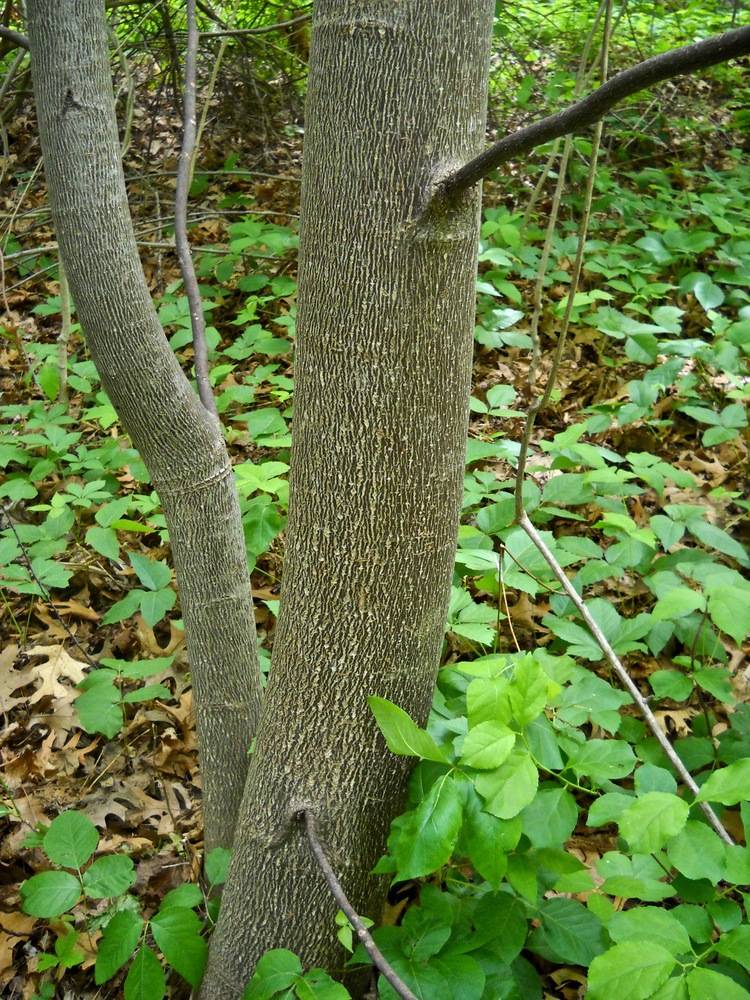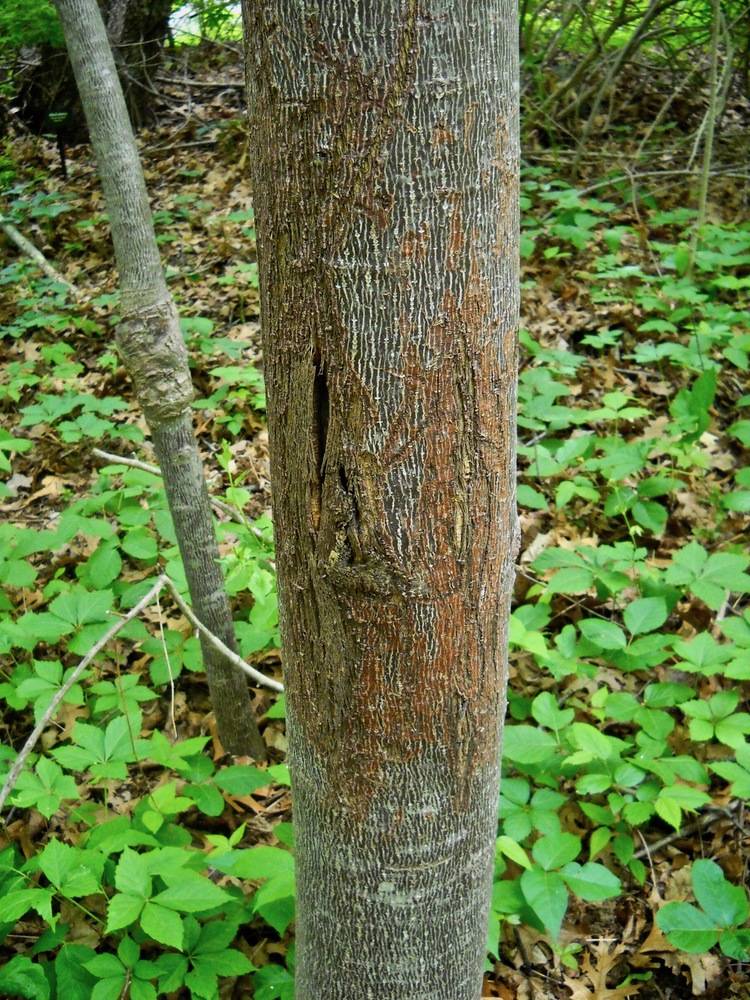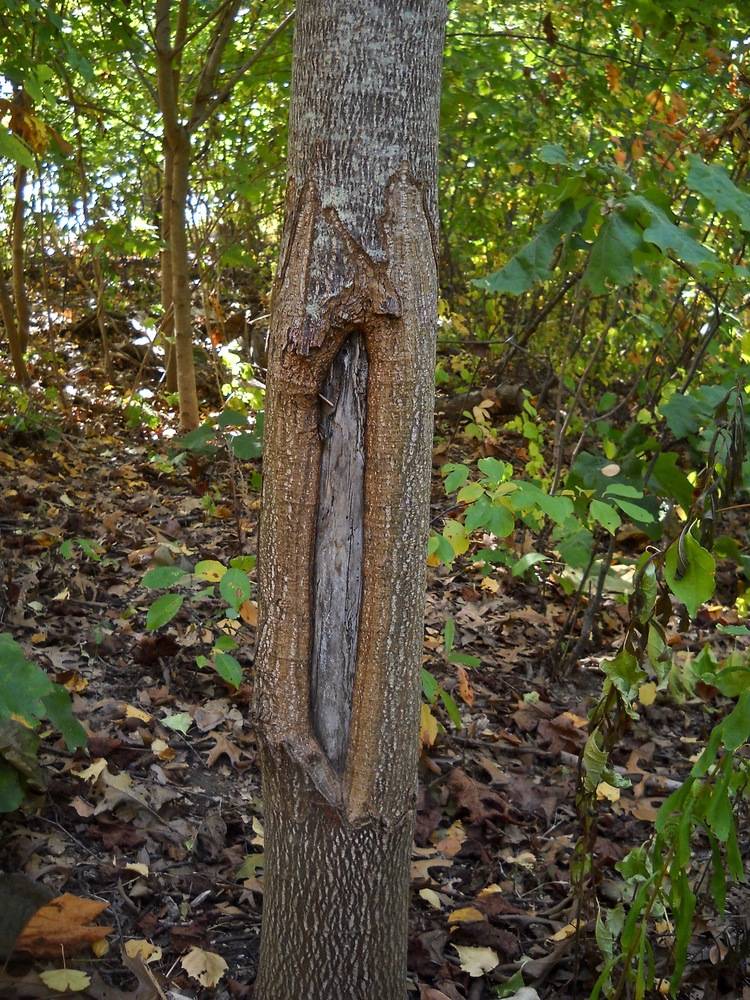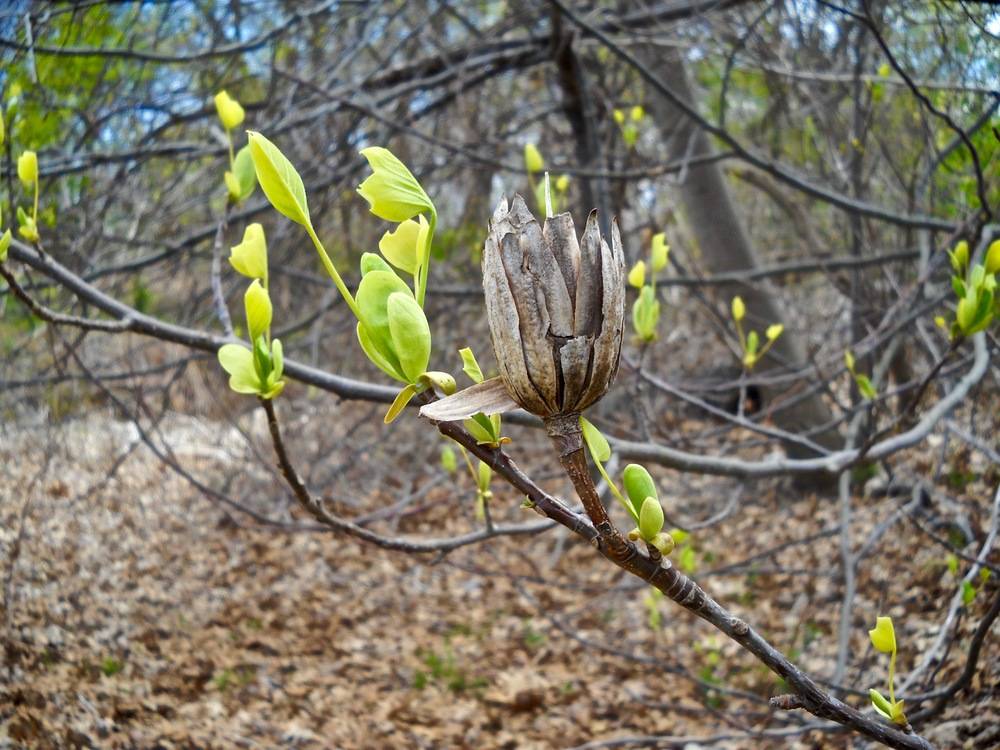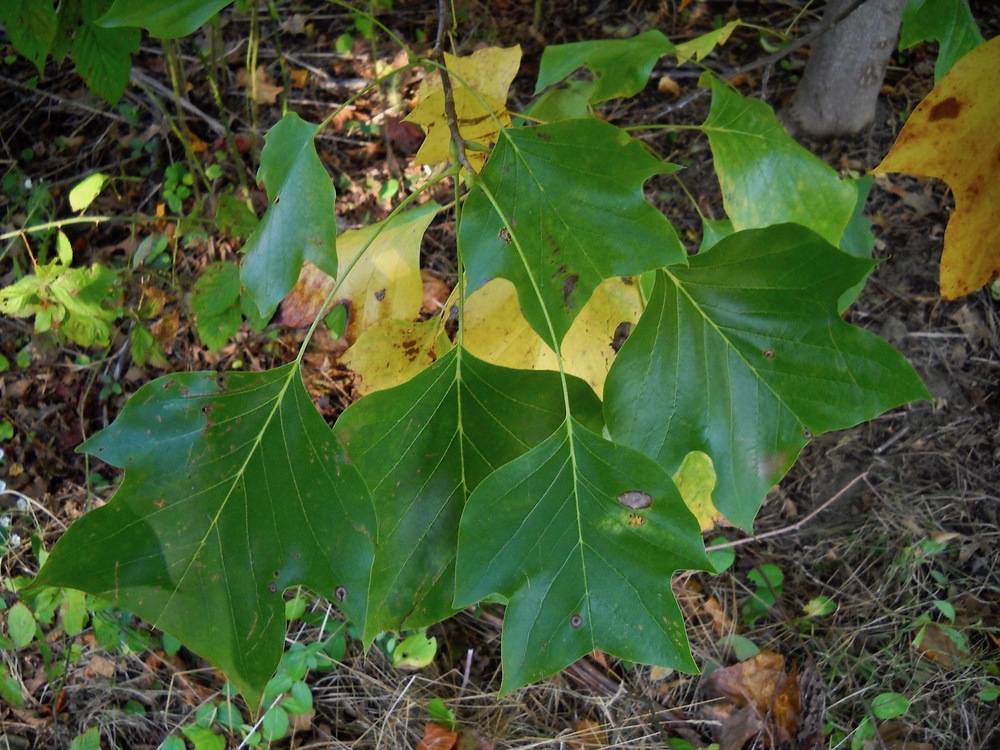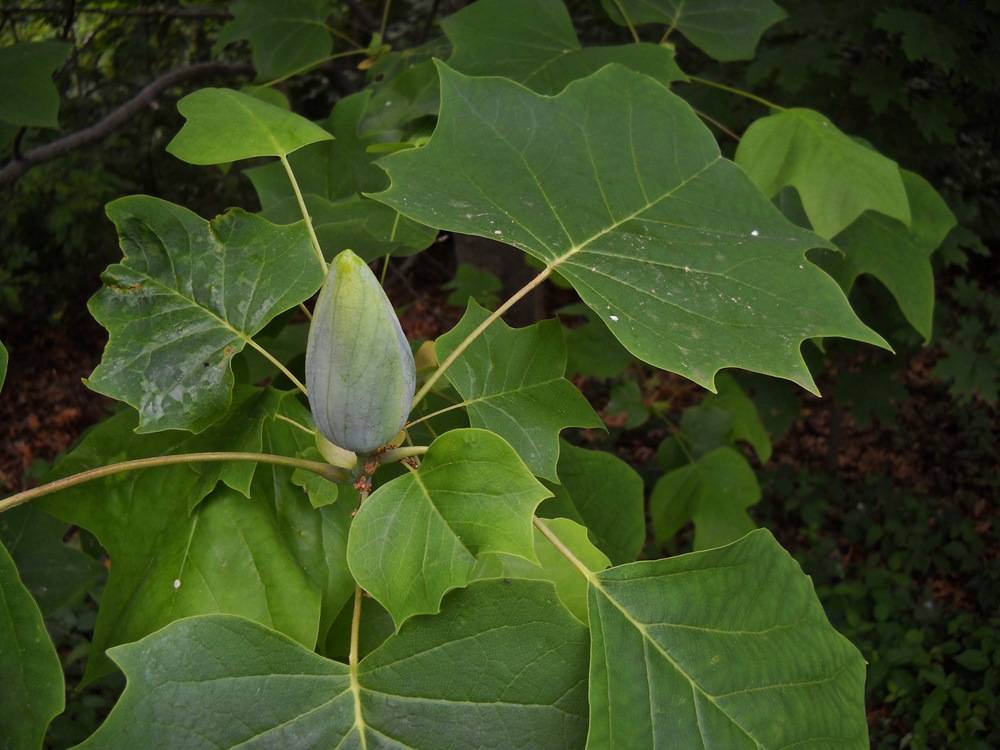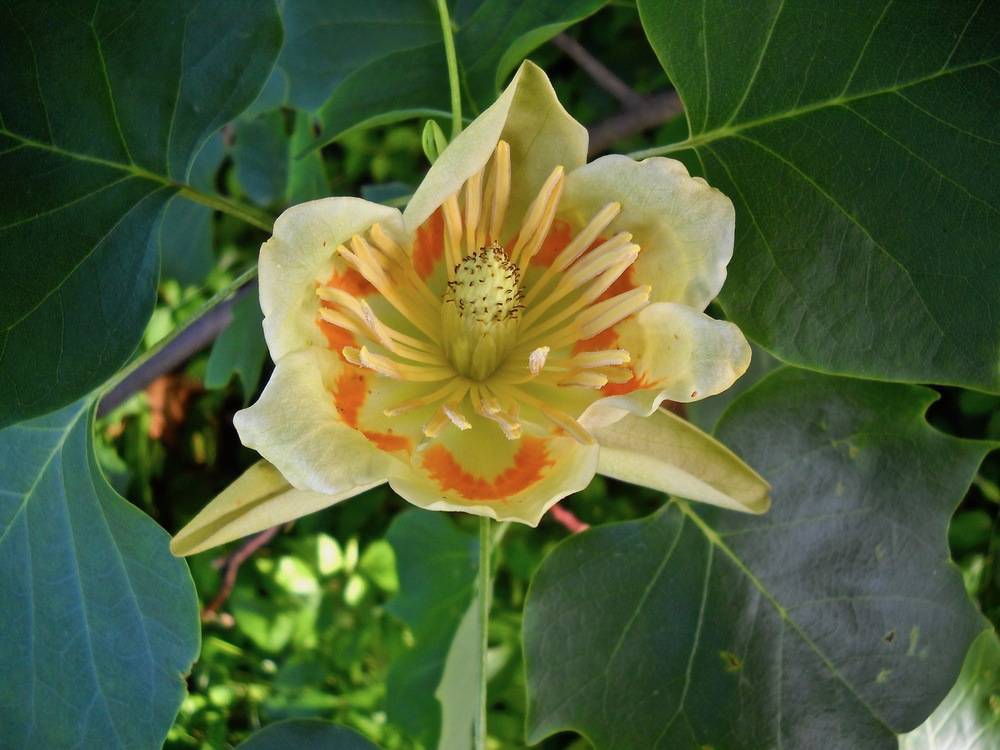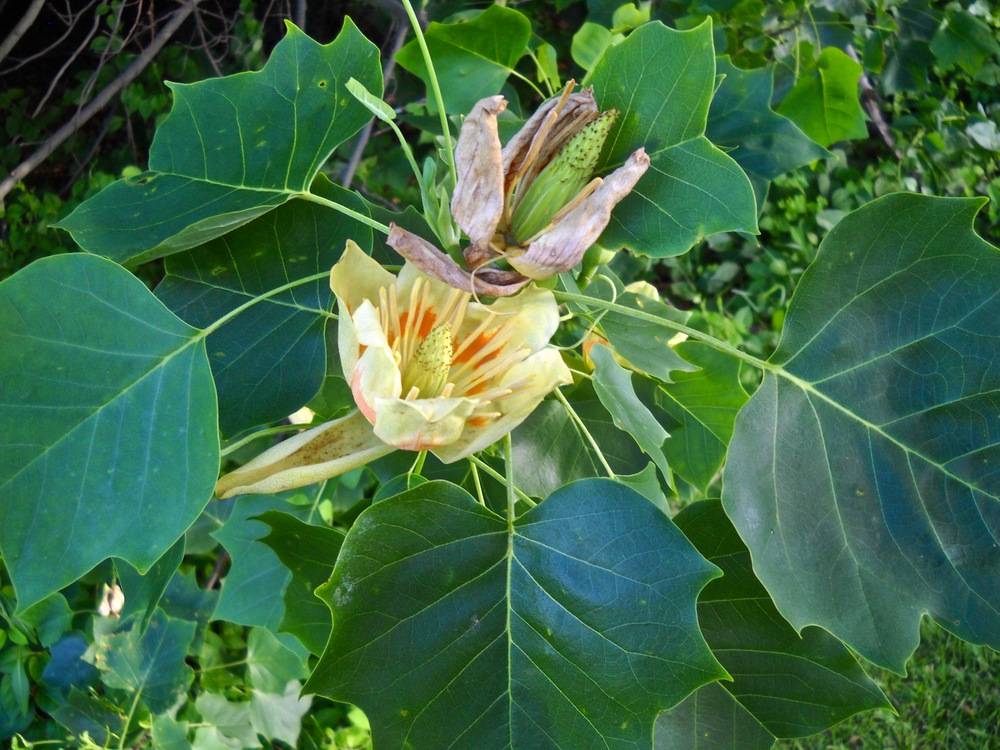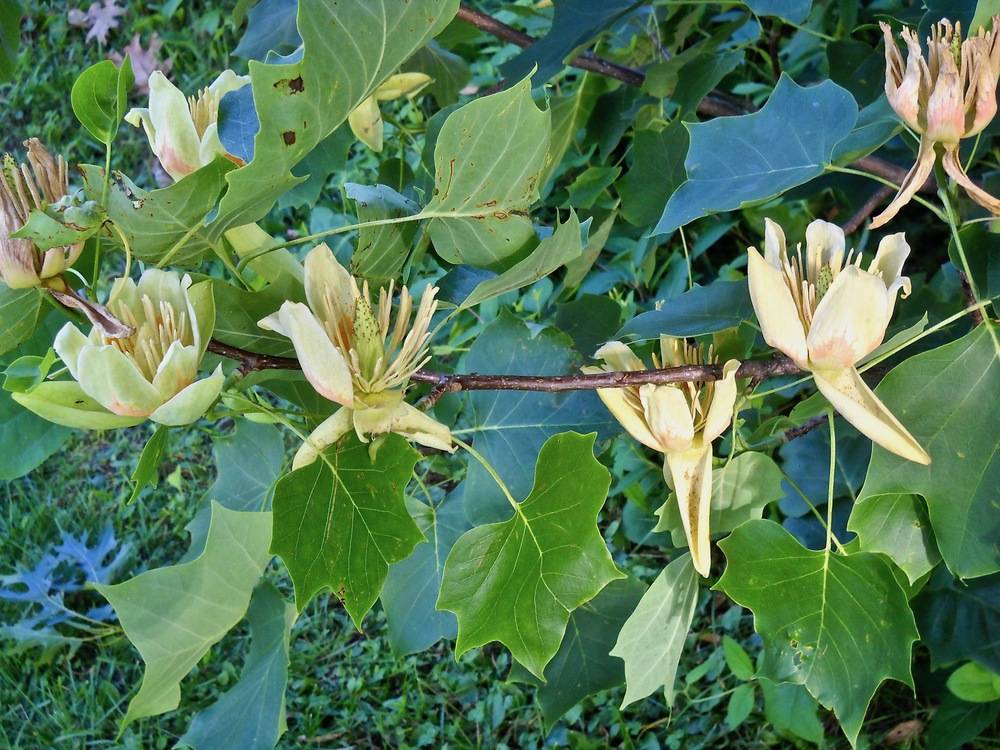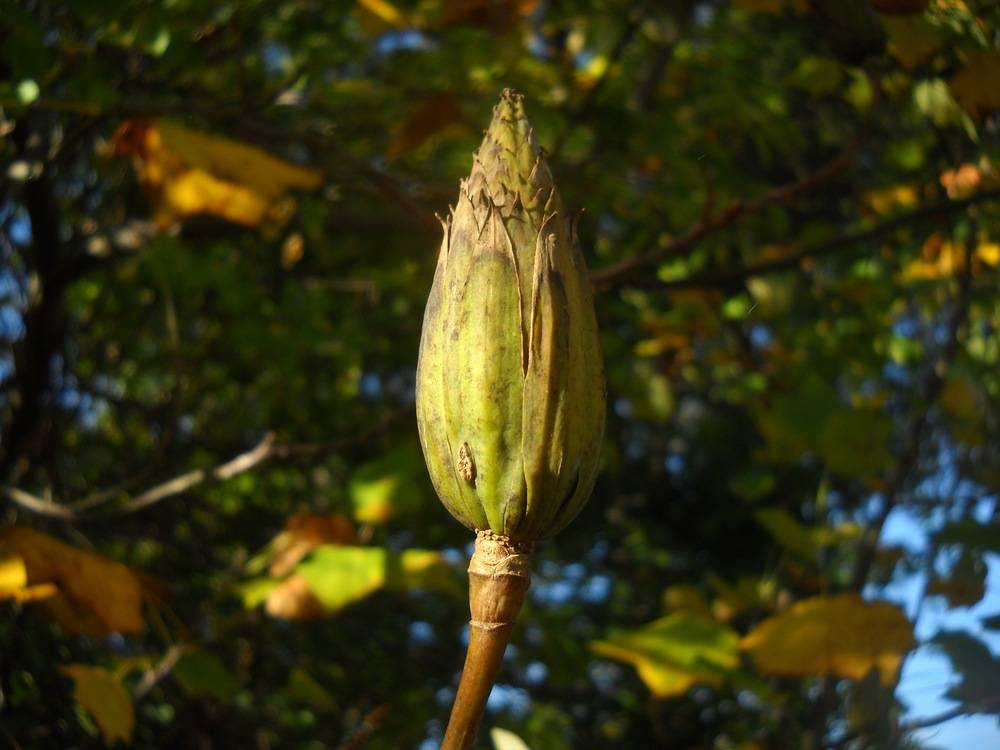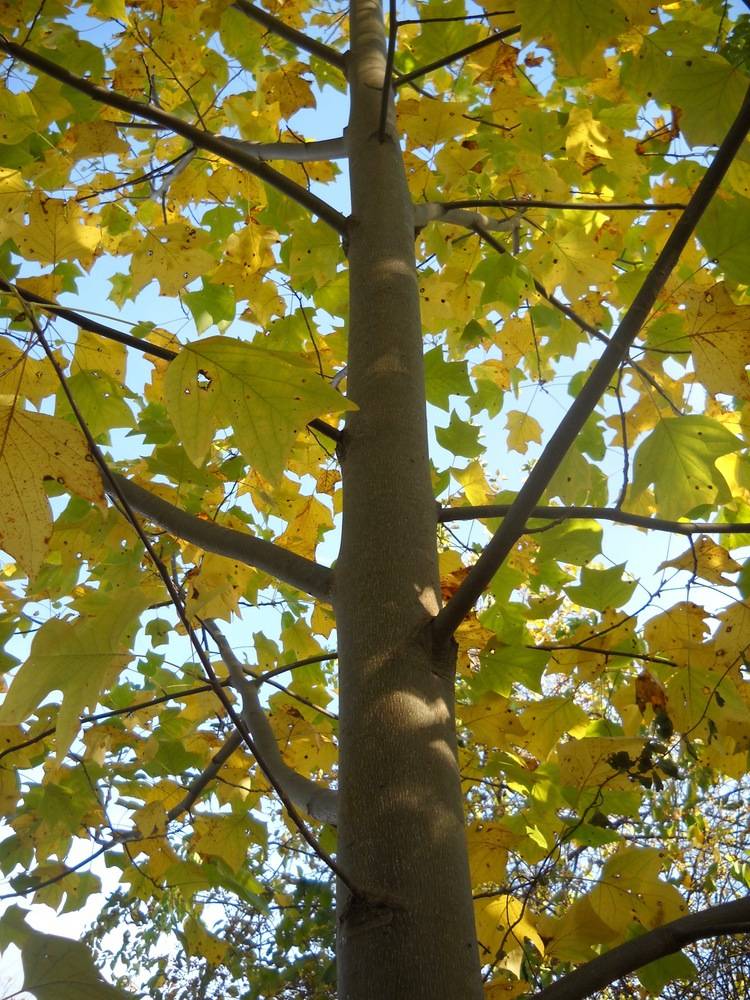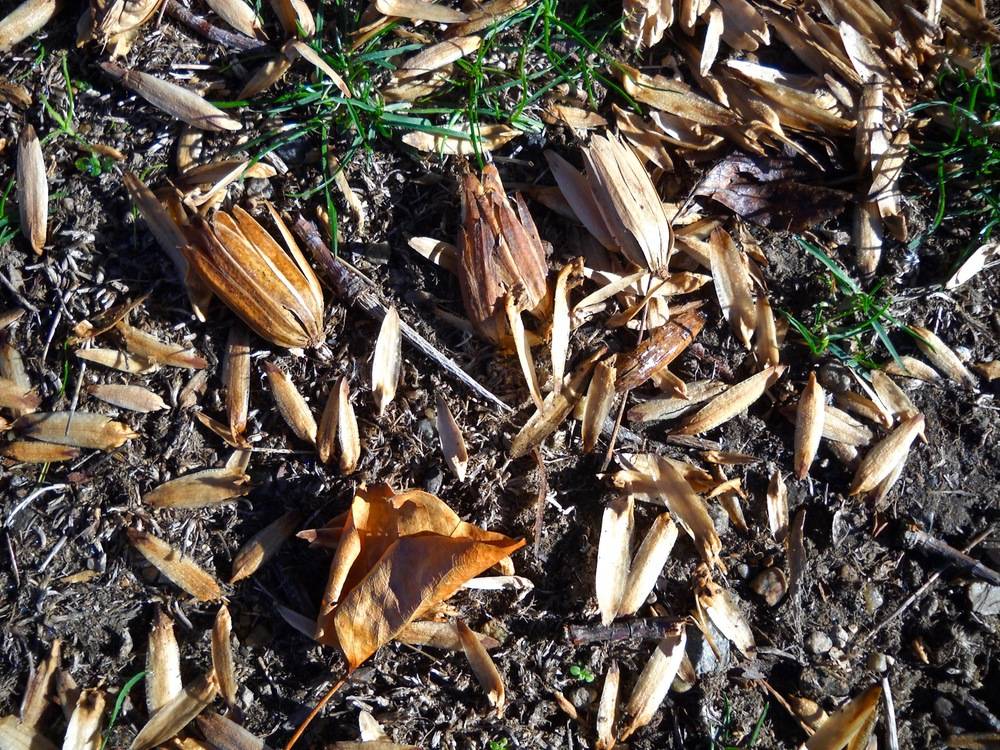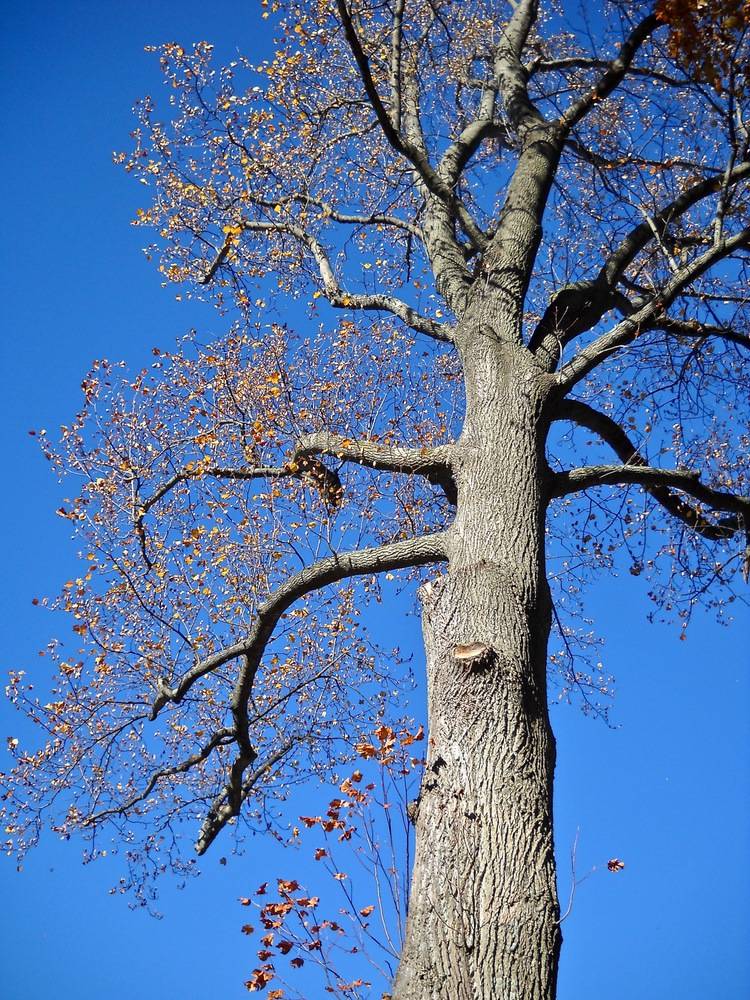tuliptree
Capable of reaching a height of over 190 feet, the tuliptree is the tallest hardwood species native to eastern North America.
The large individual just north of the playground at Salter Grove produces large crops of wind-dispersed seeds that are viable for 4-7 years. It is probably parent to the smaller tuliptrees scattered throughout the upland woods of the park.
Juveniles in the understory are easy to identify because of the distinctive leaf shape. Its smooth trunk is also easy to recognize with its brownish gray and finely fissured bark. Another characteristic common to some tuliptrees in the park is damage caused by deer rubbing their antlers against the trunk to remove velvet from their antlers.
The oldest individual recorded is more than 500 years old. A tuliptree in Maryland that served as a Liberty Tree during the Revolutionary war was estimated to be 400 years old when it was fatally damaged by Hurricane Floyd in 1999. Liberty trees were large trees that served as rallying points for colonists meeting to protest against the British.
Unlike other fast growing tree species that tend to have soft wood and short lifespans, the tuliptree produces hard wood. At a time when manufactured goods were unavailable or very costly, American colonists and pioneers used the lightweight but durable wood to make dugout canoes, construct houses, as well as craft many domestically useful items such as buckets, buggies, coffin boxes, dishes, pumps, shingles, troughs, and wagon beds. Native Americans made tea from the bark to treat infection and inflammation.
For more information:
https://gobotany.nativeplanttrust.org/species/liriodendron/tulipifera/
http://dendro.cnre.vt.edu/dendrology/syllabus/factsheet.cfm?ID=54
https://www.srs.fs.usda.gov/pubs/misc/ag_654/volume_2/liriodendron/tulipifera.htm
https://en.wikipedia.org/wiki/Liriodendron_tulipifera

